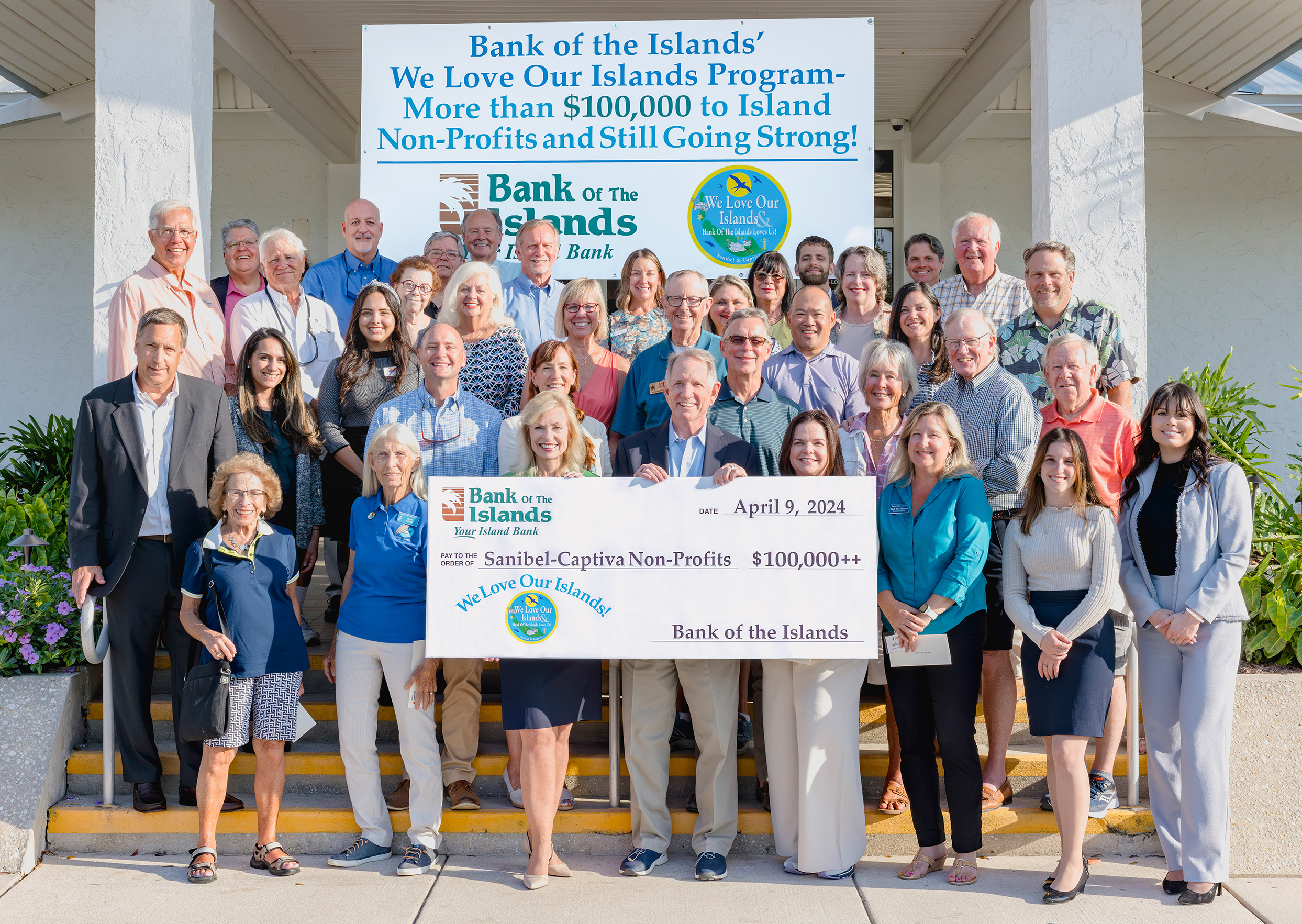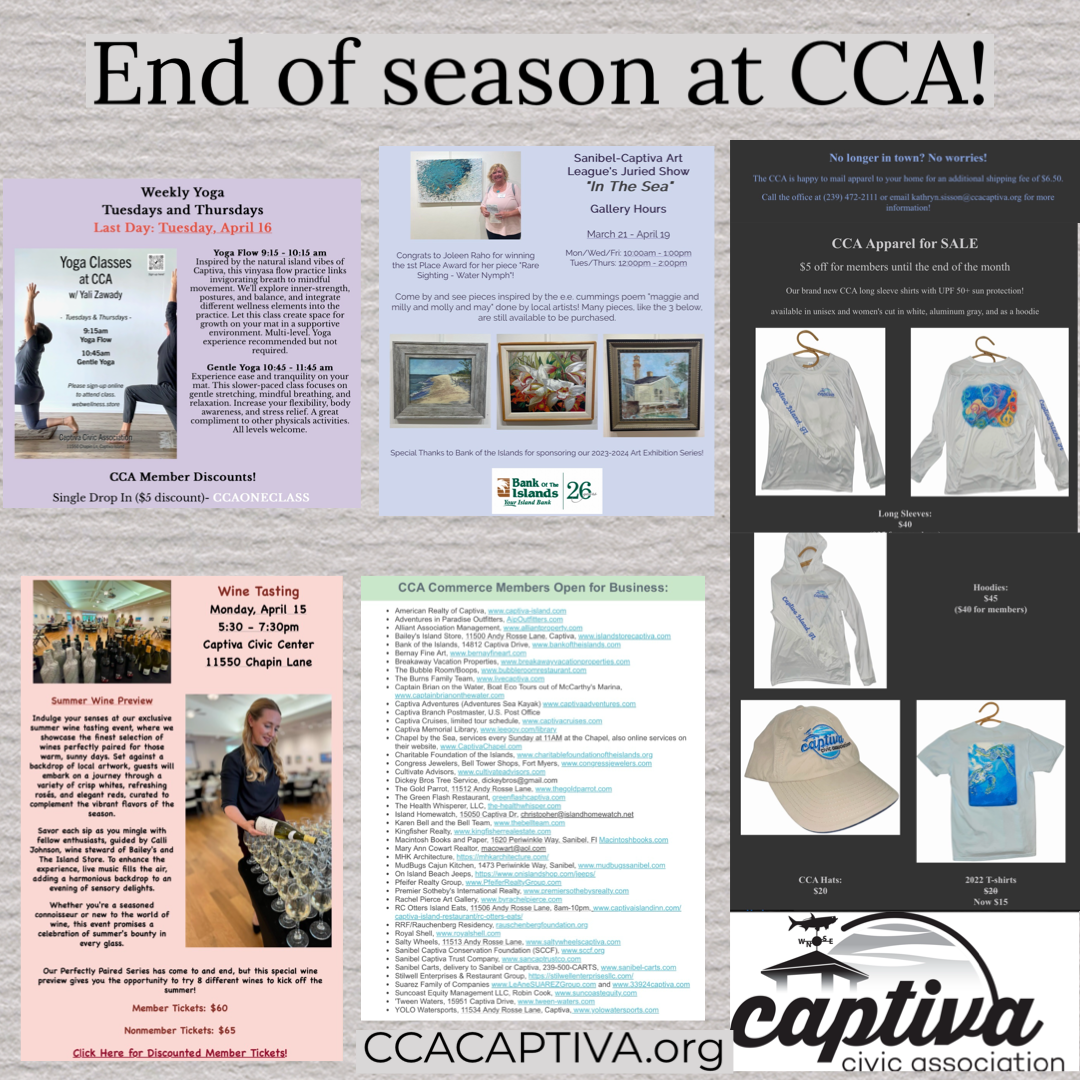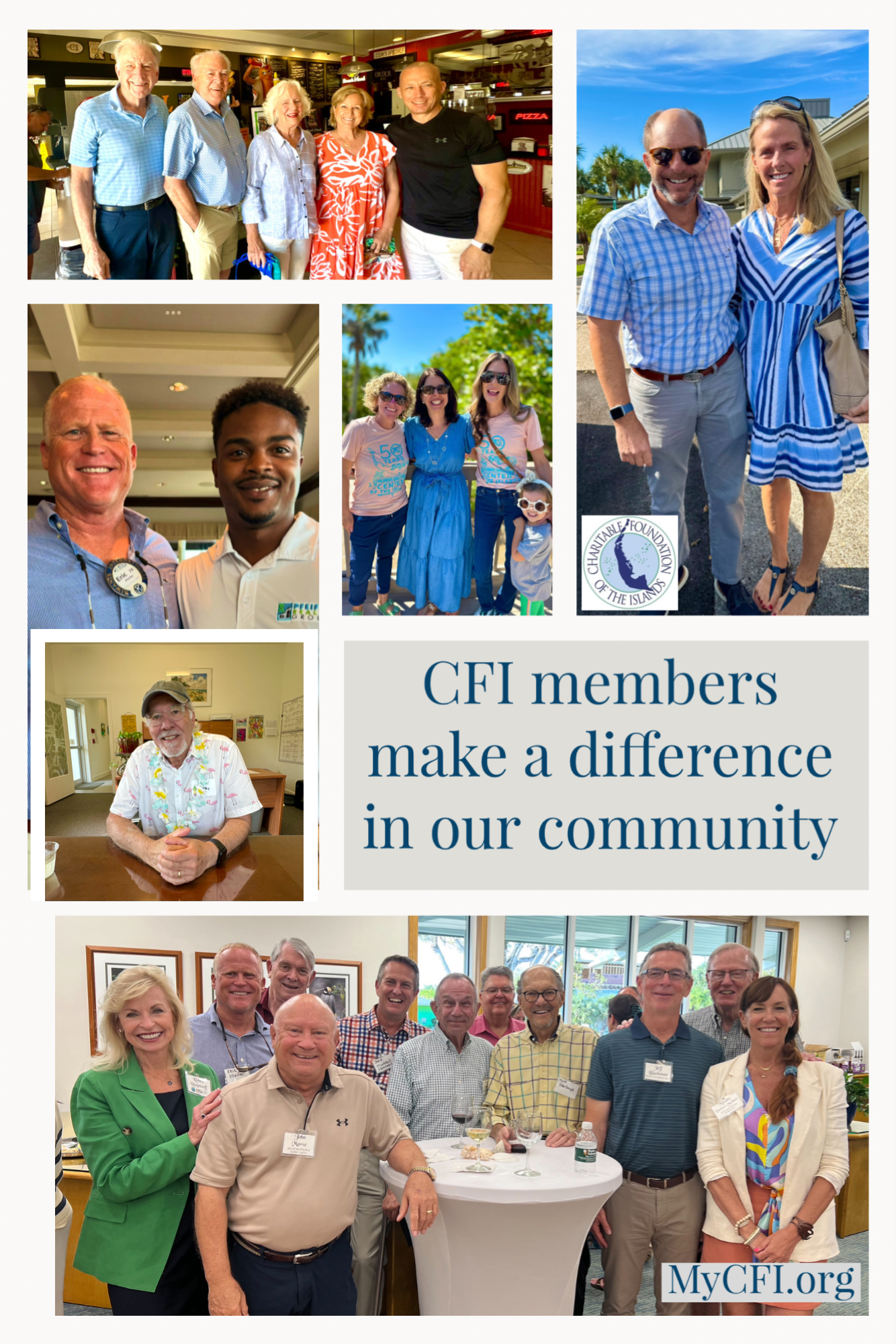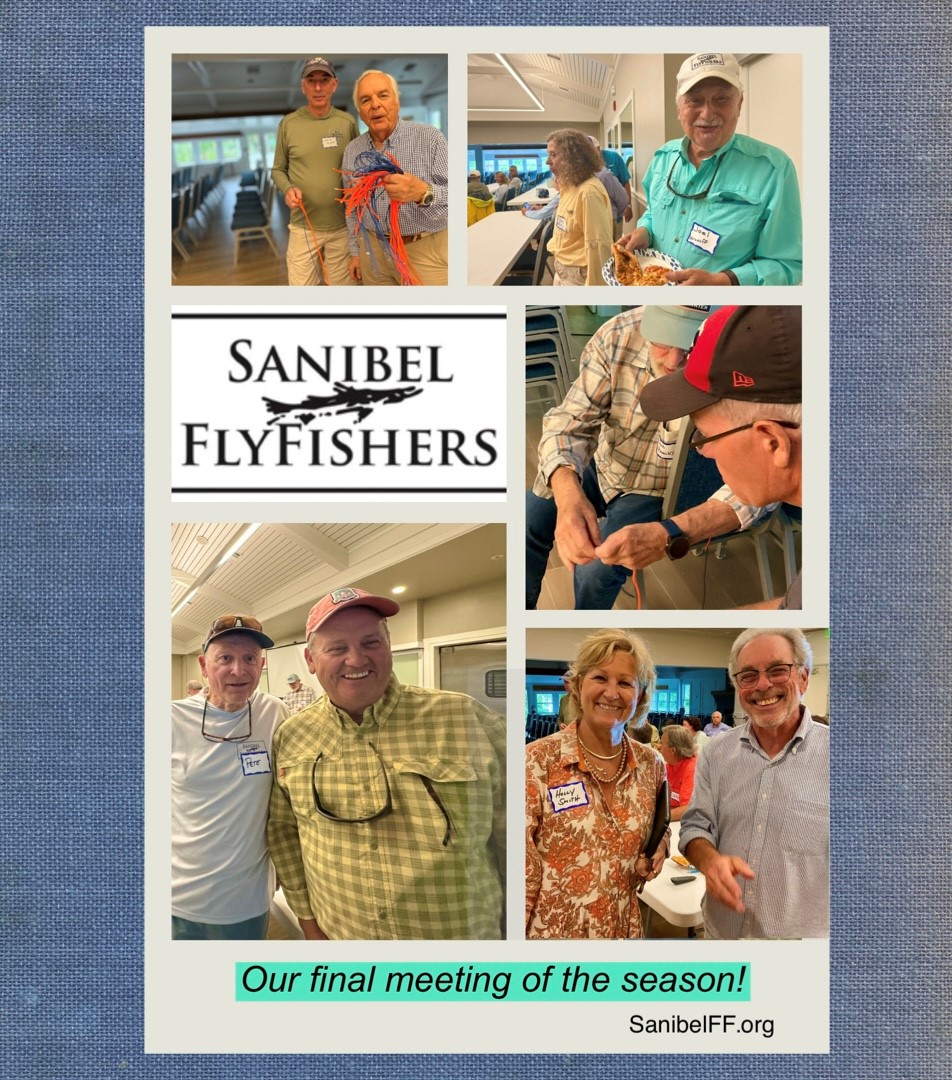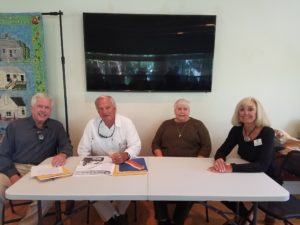 Island icons Porter Goss and Jean Woodring, both on hand when the city of Sanibel came to be, spoke before a full house at a recent Sanibel Historical Village event. The event, called a Volunteer Update, is open to all volunteers and to members at the $150 level and above. Former Village President Alex Werner and Board Member Gayle Pence moderated the conversation.
Island icons Porter Goss and Jean Woodring, both on hand when the city of Sanibel came to be, spoke before a full house at a recent Sanibel Historical Village event. The event, called a Volunteer Update, is open to all volunteers and to members at the $150 level and above. Former Village President Alex Werner and Board Member Gayle Pence moderated the conversation.
Goss and Woodring both came to the island in the early 1960s and were instrumental in the early days of incorporation. “We started to think about what this place should look like in 10 or 20 years,” Goss said. “We discovered a lot of people had lots of ideas different than we did. Change was upon us.”
Goss stressed the importance, if you care about the community, to get the message out about a its core values. “And what better place to do that than the Historical Village.”
Woodring added that the city has changed dramatically since she got here, just by the number of people who live here and the traffic. “But it’s still the best place on earth,” she said. “All you have to do is go somewhere else and you get homesick.”
Woodring was hired by the new city as a clerk typist. “I needed a job,” she said, adding that her family had come to Sanibel from places in Florida that had already “gone to hell.” The push for self-determination was present community-wide, even though not everybody was on board. “I’m pleased that Sanibel is, for the most part, still on track,” Woodring added. “We’re all right for the moment.”
Goss said that at the time they were trying to incorporate the city, most of their efforts fell on deaf ears. “There was a legitimate controversy about private property rights,” he explained. One possibility raised was that maybe the county should do everything but the zoning, so the new city wouldn’t have to take on forming a fire department and other things. “Lee County Commission said no, Sanibel must do it all. One County Commissioner was sympathetic, the rest were opposed,” Goss recalled. Lee County threatened that if the people of Sanibel incorporated, they would get none of the causeway revenue.
Woodring thinks that antagonism toward Sanibel continues to this day. “People don’t understand why we live here,” she said.
What happened next? A lot of community meetings over two years. They had to find someone who knew how to incorporate a city. Informal boards of stakeholders were set up. “We had to find somebody who knew how to do it. Eileen Lotz new how. We call her the Mother of Sanibel,” Goss said.
As things progressed, Goss and others spent a lot of time in Tallahassee – “and the folks in Tallahassee spent a lot of time not listening to us.” Still, incorporation was accomplished in 1-1/2 years, which Goss called “a miracle. You can’t even get a meeting with someone in the government in 1-1/2 years!”
On November 4, 1974, 85 percent of the people on Sanibel who could vote, voted. The population at the time was 2,500, and the vote was a decisive 2-1.
“Now the people who were in favor of incorporation had to persuade the people who weren’t,” Goss continued.
Goss said that Woodring essentially was chief financial officer, chief of staff, “chief of everything,” he claimed, “because she was the only one. She was the happy start-up of a wonderful city staff.”
A firm in Philadelphia and an environmental lawyer from Chicago got to work on the land development plan. “We never lost a land planning issue in any court,” Porter explained.
Goss continued, “Everybody was on a committee of some kind. Everybody participated who wanted to. Some went away mad and some went away happy. The whole idea was to build everybody in. It was just a matter of weeks before we hired a city manager.”
In the end, the city of Sanibel got national attention. Who is going to run this city: a bunch of nature-lovers or good, solid businessmen? The Sanibel Plan has been celebrated nationally. “We have tried to compromise in the areas where we should compromise. Nobody got everything and nobody got nothing,” Goss said. He explained that about 60 to 70 percent of the island is conservation land, and that the remaining land is about 90 percent developed. The population is less than 7,000 and, Goss said, might even go down a little bit.
First city offices were upstairs at Periwinkle Place with the Island Reporter below them.
“Everybody chipped in while doing work towards incorporation,” Goss said. “Almost everything was pro bono. And it wasn’t one or two wealthy people, it was small donations.”
Woodring said that incorporation “truly was like a mission from God for most of the people in the community. It was utterly fascinating. We have since gotten very fine marks. We have done well.”
Goss agreed. “We always wondered if we would be able to keep the sense of community here, and I think we have.”

